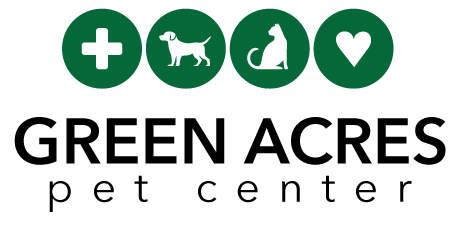Trichobezoars (Hairballs) in Cats
 Trichobezoar is a medical term used to describe a hairball. The word “trich” means hair, while a bezoar is any foreign material that obstructs the stomach or intestines. Therefore, a trichobezoar is a gastrointestinal obstruction caused by hair.
Trichobezoar is a medical term used to describe a hairball. The word “trich” means hair, while a bezoar is any foreign material that obstructs the stomach or intestines. Therefore, a trichobezoar is a gastrointestinal obstruction caused by hair.
While hairballs are typically attributed to cats, they can also cause problems in dogs. Any dog or cat that grooms themselves, or eats the hair of others, is at risk of developing a trichobezoar.
What causes trichobezoars?
Cats constantly ingest small amounts of hair as they groom themselves. This hair cannot be digested due to the presence of keratin (a fibrous, structural protein), so it usually passes through the intestines and leaves the body in the feces. However, in some situations, hair may become tangled on itself or another object in the stomach or intestines. This tangled mass of hair may become too large to pass in the feces, resulting in a hairball, or trichobezoar.
Once a hairball forms, there are two possible outcomes. Many cats simply vomit up the hairball, leaving you to discover it on your floor, and continue with their normal lives. In some cases, however, this hairball may become lodged in the gastrointestinal tract, leading to an obstruction.
Trichobezoars are more common in cats with underlying gastrointestinal disease. These cats may have altered gastrointestinal motility that limits the movement of hair through the digestive tract. Additionally, cats with allergies or other skin disease may be more prone to trichobezoars because they lick their skin and coat more vigorously. Likewise, cats that over-groom due to stress or pain may be more prone to this condition.
What are the signs of a trichobezoar?
In many cases, the only sign that your pet has a trichobezoar is a vomited hairball. These tubular-shaped, wet collections of hair are easily identified by most cat owners. Their tubular shape is caused by forces that compress the mass of hair as it travels up the esophagus. However, trichobezoars that cause an obstruction are not as easily identified.
If a trichobezoar is causing an obstruction, you may not see hair in your pet’s vomit. Signs of an obstruction may include vomiting, abdominal pain, and lack of bowel movements. If your cat cannot keep down food or water, veterinary treatment is needed.
How are trichobezoars diagnosed?
If your cat is vomiting hairballs, the diagnosis is straightforward. Your veterinarian may recommend diagnostics to search for underlying causes of your cat’s hairballs, such as a thorough skin examination, blood tests, and possible gastrointestinal testing.
If there is an obstruction caused by a trichobezoar, further testing will be needed. Your veterinarian will begin with a thorough physical examination, assessing your pet’s overall health while also palpating (feeling) the abdomen for any evidence of intestinal disease or obstruction.
Next, your veterinarian will likely recommend imaging to look for evidence of an obstruction. In most cases, radiographs (X-rays) are the first step in assessing for the presence of an obstruction. Depending on the appearance of your cat’s X-rays, your veterinarian may recommend other imaging tests, such as an ultrasound or a contrast study (which examines the flow of a radiopaque material through the intestines).
Your veterinarian may also recommend blood tests to assess your cat’s organ function and overall health.
What is the treatment for a trichobezoar that is causing an obstruction?
If your cat has an obstruction caused by a trichobezoar, it must be removed. In rare cases, your veterinarian may recommend removal with an endoscope that can be placed down your cat’s esophagus and into the stomach. More commonly, the obstruction is removed via surgery. Surgery allows your veterinarian to access your cat’s entire gastrointestinal tract, so they can find any potential obstructions and remove trichobezoars at multiple sites, if necessary.
Most cats respond well to surgery if it is performed promptly, before significant intestinal damage has occurred. Your veterinarian will talk to you about your cat’s prognosis before surgery, and about required follow-up care. Most patients remain hospitalized for one to three days after surgery and are then sent home with specific instructions regarding diet, medication, and exercise restriction.
Can trichobezoars be prevented?
There are several strategies used to prevent hairballs in cats. The most important prevention strategy is to work with your veterinarian to address any underlying intestinal disease. Anything that affects gastrointestinal function may make your cat prone to trichobezoars. Additionally, skin diseases should also be addressed to minimize hair ingestion.
Talk to your veterinarian to determine whether a hairball-specific diet may be a good option for your cat. These diets contain high levels of fiber, intended to move hair through the gastrointestinal tract and reduce the risk of it accumulating into trichobezoars. Additionally, your veterinarian may also recommend supplements or medications to reduce the risk of trichobezoars.
© Copyright 2025 LifeLearn Inc. Used and/or modified with permission under license. This content written by LifeLearn Animal Health (LifeLearn Inc.) is licensed to this practice for the personal use of our clients. Any copying, printing or further distribution is prohibited without the express written consent of LifeLearn. This content does not contain all available information for any referenced medications and has not been reviewed by the FDA Center for Veterinary Medicine, or Health Canada Veterinary Drugs Directorate. This content may help answer commonly asked questions, but is not a substitute for medical advice, or a proper consultation and/or clinical examination of your pet by a veterinarian. Please contact your veterinarian if you have any questions or concerns about your pet’s health. Last updated on May 8, 2025.


